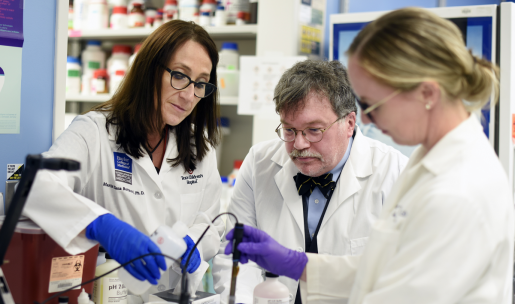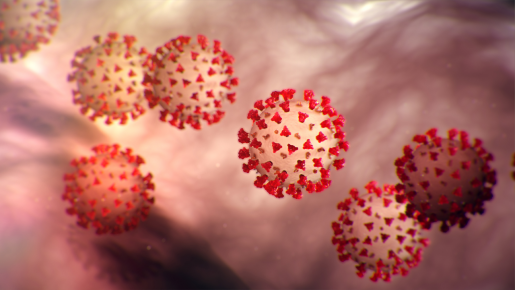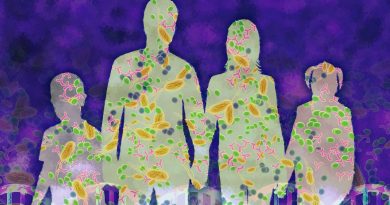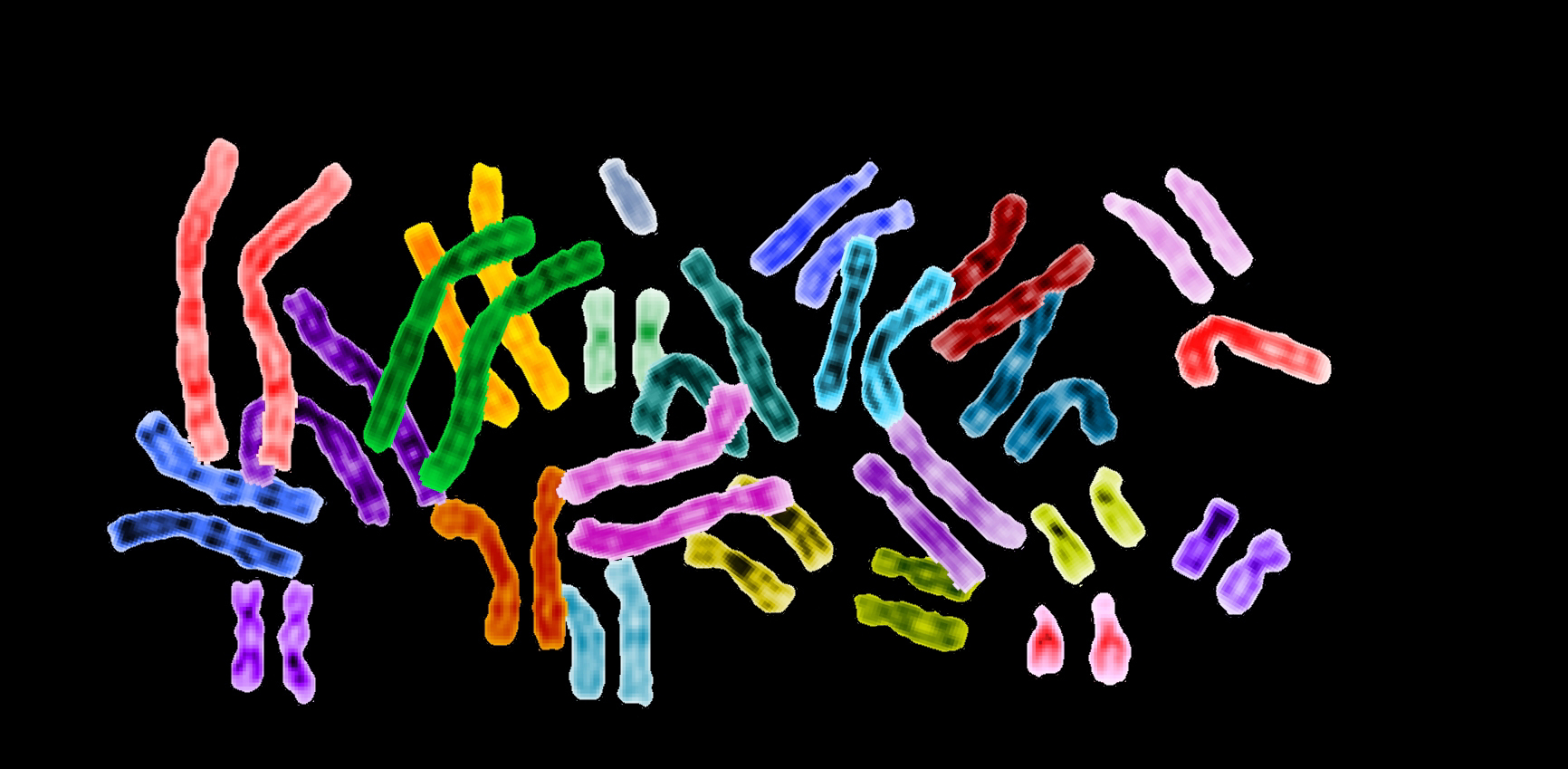COVID-19 vaccine development underway at Baylor and Texas Children’s Hospital
The National School of Tropical Medicine at Baylor College of Medicine and the Center for Vaccine Development at Texas Children’s Hospital, co-led by Dr. Maria Elena Bottazzi and Dr. Peter Hotez, are drawing on years of experience developing vaccines for neglected tropical diseases and emerging infectious diseases to develop a vaccine for SARS-CoV-2, the virus causing the COVID-19 pandemic.

Specifically, the experience they gained between 2011 and 2016 developing the SARS vaccine has provided them with time-saving, parallel and rapid-switch strategies as well as critical scientific information that may help accelerate the development of a safe and effective COVID-19 vaccine.
“Spike-like structures on the surface of coronavirus give the appearance of a crown, the word is derived from corona in Latin, and enable the virus to attack cells. The SARS and COVID-19 viruses are genetically very similar, and their spike proteins and structures also bear similarities that suggest that the SARS vaccine potentially could be used to prevent COVID-19,” said Bottazzi, professor of pediatrics and of molecular virology and microbiology and associate dean of the National School of Tropical Medicine at Baylor.
The COVID-19 vaccine being developed by Bottazzi, Hotez and colleagues is based on a fragment of a viral protein called the receptor binding domain, which is part of the spike protein the coronavirus uses to attach and infect human cells.
Researchers also have learned from laboratory experiments that human antibodies from people who recovered from SARS can bind to and neutralize both SARS and COVID-19 viruses. However, it is not known yet whether SARS antibodies would give protection from live COVID-19 virus.

“Experimental evidence suggests that a vaccine that triggers an immune response that targets the receptor binding domain would lead to neutralization of the virus,” Bottazzi said. “We have teamed up with a group in the New York Blood Center and one at the University of Texas Medical Branch in Galveston. Our preclinical studies show that the receptor binding domain is a good vaccine candidate. It can trigger an immune response that is protective and does not induce adverse events.”
Making a vaccine, one step at a time
At Baylor and Texas Children’s, Bottazzi, Hotez and colleagues follow a series of well-defined steps to develop a vaccine.
- Antigen discovery: once the microbe that causes the disease has been identified, researchers search for its “Achilles heel,” a part of the microbe called the antigen, that can be the target of an immune response that neutralizes the microbe. In the case of both SARS-CoV and SARS-CoV-2 viruses, the receptor binding domain in the viral spike is the selected antigen.
- Process development: using genetic engineering, the antigen is cloned, expressed and purified in the laboratory and processes are developed suitable for its production in large amounts as a clinical grade substance required for human testing.
- Vaccine formulation and delivery systems: purified clinical grade antigen is combined with a suitable adjuvant and stored in known concentrations in vials. Adjuvants are substances added to boost the immune response.
- Preclinical testing: the formulated vaccine is tested in animal models for safety, optimal dosage, immunogenicity (its ability to trigger an immune response) and effectiveness.
- Immunology testing: the immune response triggered by the vaccine is analyzed to determine its type and duration.
- Toxicology testing: the vaccine is tested under approved laboratory practices to identify potential toxicities.
- Human clinical trials, phase I: the vaccine is prepared for human testing and administered to human volunteers to determine its safety. This step also may provide preliminary results on the type of immune response triggered by the vaccine in humans and its potential protective value.
Human clinical trials, phase II/III: the vaccine is tested for safety, immunogenicity and its effectiveness in volunteer human subjects.
The SARS vaccine developed by Bottazzi, Hotez and colleagues has successfully completed preclinical testing with promising results in treating SARS. The researchers are completing other regulatory requirements with the goal of conducting a phase I, human clinical trial to evaluate the safety of the vaccine. So how does this translate to a COVID-19 vaccine?
The strategy to accelerate the development of the COVID-19 vaccine: parallel and rapid switch
The experience gained during the development of the SARS vaccine is helping Bottazzi, Hotez and their colleagues accelerate the process to develop a vaccine for COVID-19.
“We are mimicking the procedures we used for the SARS vaccine, so instead of taking about four years, as the SARS vaccine did, it may take us between 12 to 18 months, if all goes well, to develop the COVID-19 vaccine,” Bottazzi said. “Our strategy with the COVID-19 vaccine is called a parallel and rapid switch.”
The researchers are developing both vaccines in parallel. The SARS vaccine, however, is at a more advanced stage of development than the COVID-19 vaccine.
Bottazzi estimates that their SARS vaccine may be ready for a phase I, human clinical trial to begin in fall 2020, which may take one year. The idea is to continue to develop the COVID-19 vaccine in the meantime.
“If all goes well, we estimate that we may have a COVID-19 vaccine candidate ready for phase I human clinical trials in a year from now, which is when we predict the safety trial for the SARS vaccine still will be running. We intend to design a strategy so we can rapidly switch and initiate evaluation of the COVID-19 vaccine and eventually fold it into the SARS clinical development plan, instead of designing totally separate strategies just for COVID-19, which would take longer to be advanced,” Bottazzi said. “We would have a cohort in which we test the SARS vaccine and a different cohort for COVID-19 vaccine, running in parallel. It may take a year to have the safety data from the COVID-19 phase I clinical trial.”
The advantages of Baylor/TCH COVID-19 vaccine
The Center for Vaccine Development at Texas Children’s develops protein-based vaccines that are widely used to prevent other infectious diseases. The Center uses technologies, procedures and reagents that have been proven to work as is attested by many licensed, effective vaccines that have been prepared using these procedures.
“We think this point is very important because these platforms have a history of producing safe vaccines that are low-cost and can be mass-produced relatively easily and rapidly to generate millions of doses,” Bottazzi said. “There is also evidence that countries with industrial manufacture capabilities can rapidly adopt and use these technologies to produce many vaccine doses.”
The researchers think that using proven strategies to design and produce a vaccine is particularly important for COVID-19, which currently is rapidly spreading around the planet causing illness, death and economic destabilization. Having an effective vaccine that can be affordable, mass-produced rapidly and easily by countries around the world would be a game changer in the current pandemic.
“There are newer technologies to make vaccines, but they are still experimental. There is no data yet regarding the effectiveness of these vaccines in humans or whether they could be mass-produced easily at a low-cost for all countries,” Bottazzi said.
Now that COVID-19 has emerged as a pandemic, our hope is that we can advance a low-cost and safe vaccine to benefit people in need globally,” said Hotez, professor of pediatrics and molecular virology and microbiology and dean for the National School of Tropical Medicine at Baylor.



